Stade Geoffroy-Guichard: AS Saint-Étienne
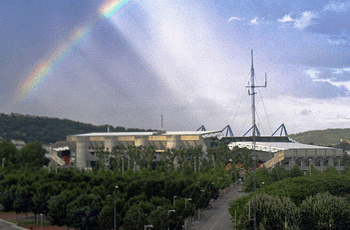
By Rémy Robert (Own work) [CC BY-SA 3.0], via Wikimedia Commons
Stade Geoffroy-Guichard has been the home of the French Ligue 1 side AS Saint-Étienne since 1931. Though it is a multi-purpose stadium and has been used in high profile events such as the 2007 Rugby World Cup, it is primarily used for football matches and was one of the locations for the 2016 European Championships. That it is still being used for tournaments on the national stage is no mean feat when you considered that the first match played there was on the 17th of September 1931!
The stadium was nicknamed ‘l’enfer vert’, or ‘The Green Hell’, during the club’s heyday in the 1980s. This was owing to the fact that AS Saint-Étienne play in green and more than 47,000 people went to watch them play, creating a cacophony of noise and an extremely intimidating atmosphere. Over the years the crowd have roared the club on to ten Ligue 1 titles, although the last was in 1981.
Stats
| Stade Geoffroy-Guichard Stats | |
|---|---|
| Year Opened | 1931 |
| Capacity | 41965 |
| Average Attendance | 25803 |
| Record Attendance | 48842 (Saint-Etienne v Lens (1987)) |
| Pitch Size | 105 x 68 (7140) |
| Nickname | Le Chaudron (The Cauldron) or "l'enfer vert" (The Green Hell) |
| Owner | Stadt Saint-Étienne |
| Clubs Hosted | AS Saint-Étienne |
| First Fixture | AS Stéphanoise v Nice (17/09/931) |
| AS Saint-Étienne Stats | |
|---|---|
| Year Founded | 1919 |
| Nickname | Les Verts (The Greens), Sainté ASSE |
| Club Mascot | Unknown |
| Rivals | Olympique Lyonnais |
| Kit | Green (Home) / White (Away) / Black (Third) |
| Training Ground | ASSE |
| Shirt Sponsor | ZEbet |
| Team Owner | Bernard Caiazzo, Roland Romeyer |
| Record Goalscorer | Hervé Revelli (216) |
| Record Appearances | René Domingo (518) |
Stade Geoffroy-Guichard Photos
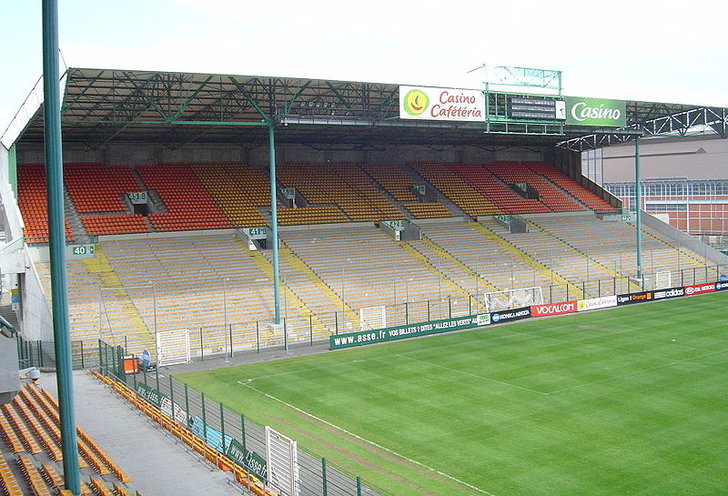
By The original uploader was Altrensa at French Wikipedia (Transferred from fr.wikipedia to Commons.) [GFDL or CC-BY-SA-3.0]
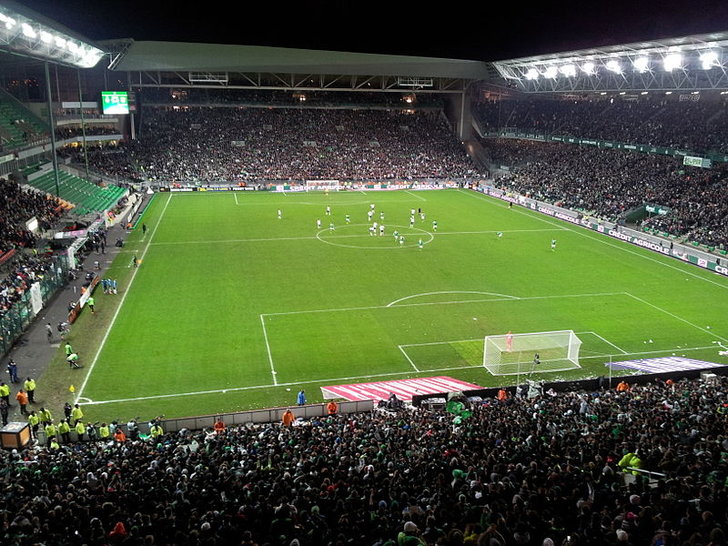
By KevFB (Own work) [CC BY-SA 3.0]
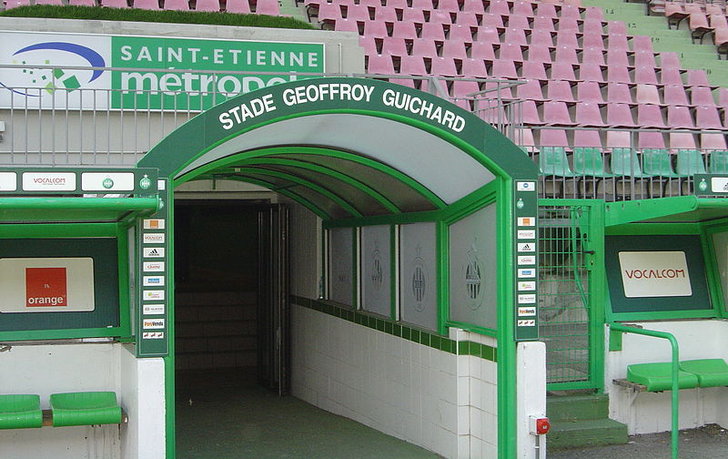
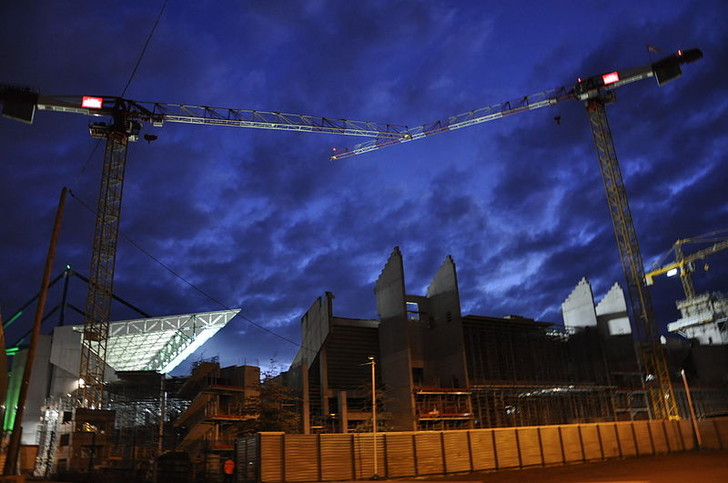
By The original uploader was Altrensa at French Wikipedia [GFDL or CC-BY-SA-3.0]
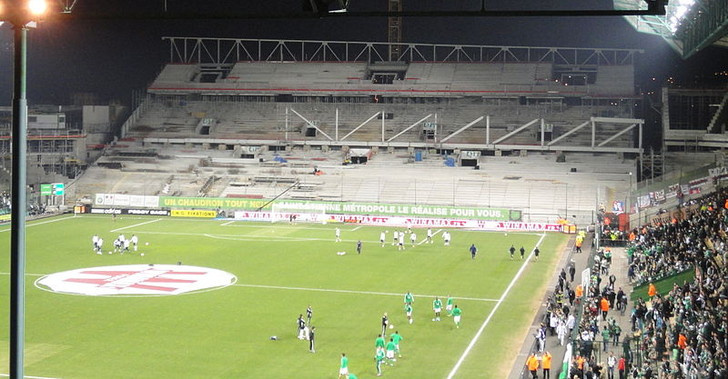
By KevFB (Own work) [CC BY-SA 3.0]
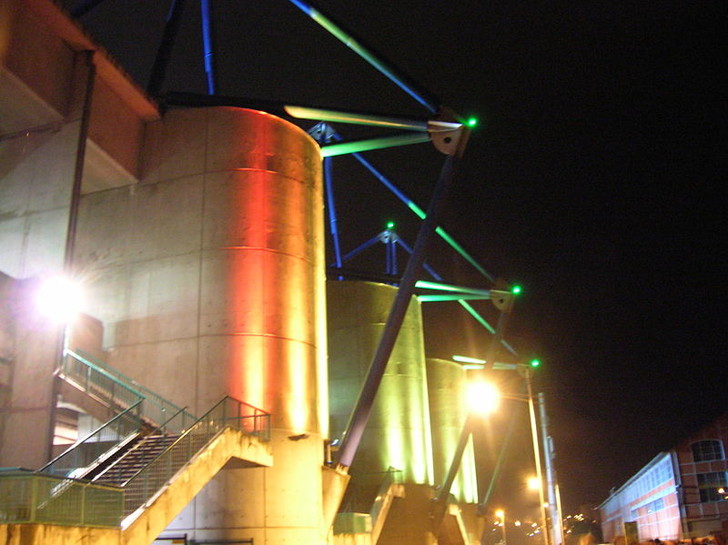
By TwoWings (Own work) [Public domain]
Stade Geoffroy-Guichard Seating Plan and Where to Sit
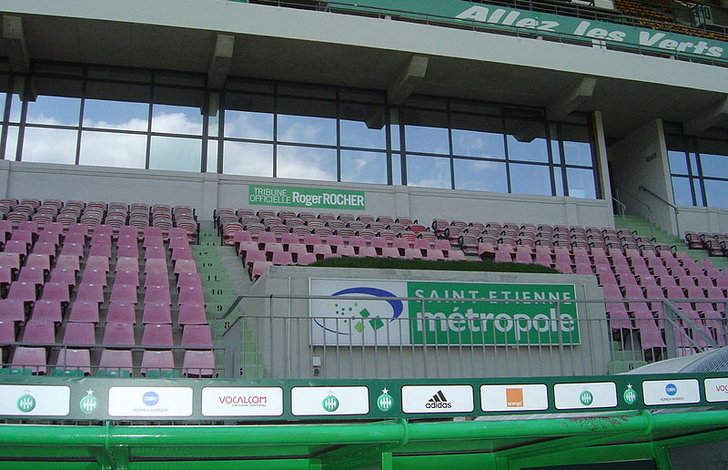
Unlike most modern grounds in France, Stade Geoffroy-Guichard is not built in a bowl style. Rather it has a more traditional four-sided appearance with stands on each side of the pitch. The stands are named The Charles Paret Stand, which is in the North, The Jean Snella Stand, which is in the South, The Pierre Faurand Stand and The Henri Point Stand.
Both the Charles Paret Stand and The Jean Snella Stand also have Kop sections towards the front of the stands that house the more vocal and excitable Saint-Étienne fans. The two side stands, meanwhile, have two tiers that are separated by a row of executive boxes.
AS Saint-Étienne Ticket Prices
Tickets are reasonably easy to come by for matches at Stade Geoffroy-Guichard, unless Saint-Étienne are playing one of their main rivals. The pricing of the tickets varies depending on where in the ground you want to sit and which team it is that Les Verts are going up against. Tickets for a game against RC Strasbourg Alsace in 2022, for example, went for between €10.00 and €35.00.
How To Get AS Saint-Étienne Tickets
As with pretty much every top-end football club nowadays, the best play to turn if you’re looking for tickets for AS Saint-Étienne matches is the club’s official website. You can speak to the box office on the phone, too, as well as by going to the ticket office at the stadium. There is a club shop near to the stadium that sells tickets for matches and you can also apply for tickets via Francebillet, Ticketnet and Digitick sales outlets that are dotted around the city. Interestingly the club’s website specifies that Ticketbis, viagogo, Good Corner and eBay are all classed as illegal resale sites.
Where to Buy
Getting To Stade Geoffroy-Guichard
Stade Geoffroy-Guichard is about 2.5 km outside of the city itself, but there are still plenty of ways to get to the ground from the city. Here are some of the more obvious options you might want to consider:
Train – If you’re looking to get to Saint-Étienne from London then your best bet is to get The Eurostar from St. Panras International to either Paris or Lyon before jumping on a local train to Gare de Saint-Étienne-Châteaucreux, or Châteaucreux for short.
There is an excellent tram system in Saint-Étienne and it is one of the quickest ways to get to the ground. You’ll get either the T1 or the T2 line heading North from Place Jean Jaurès, getting off at Stop G. Guichard. From there you’ll have a ten minute or so stroll to the stadium itself.
Bus – There is a number 9 bus that runs from outside the train station directly to the stadium. The buses run every 15 minutes or so and should take about 10 minutes to get you to the ground. Keep your eyes and ears peeled for Le Marais, the closest stop to Stade Geoffroy-Guichard.
Car – The stadium is close to the A72 motorway. You’ll want to take exit 13, which will be labelled Montreynaud/Technopole, and then head towards the city until you see the ground.
By Air – Saint-Étienne–Bouthéon Airport is about 12 km North-West of the centre of Saint-Étienne. It is a hub for low-cost carriers and their flights towards the Rhône-Alpes region of France.
Taxi – A taxi from the airport to the ground will take about 15 minutes and should set you back something in the region of €30. As always with getting a taxi, if you get caught in traffic then you could end up paying significantly more.
Parking Near Stade Geoffroy-Guichard
There is a park and ride system set-up near to the stadium, as well as numerous public parking options not too far away.
Useful Resources
Stade Geoffroy-Guichard Hotels
Saint-Étienne is a lovely city with plenty of options for your hotel stay needs. We’ve picked some options out for you here, though, in case you’re over-whelmed by your choices:

Austria, St. Étienne - £48+

City Lofthotel Saint Étienne - £60+

Hôtel du Golf, St. Étienne - £100+
Pubs and Bars Near Stade Geoffroy-Guichard
The majority of the best pubs and bars for football lovers are located in the city centre, rather than close to the ground. We’ve picked some of our favourites out for your consideration here:
Le Saint Patrick
The Smoking Dog
The Smoking Dog
Facilities
Much like with the hospitality lounges at Stade Geoffroy-Guichard, the facilities are good but perhaps not as excellent as you’d expect from a newer, more modern stadium. You’ll still find plenty of places to buy some food and get a drink as well as reasonably comfortable seats with good views of the action.
Hospitality
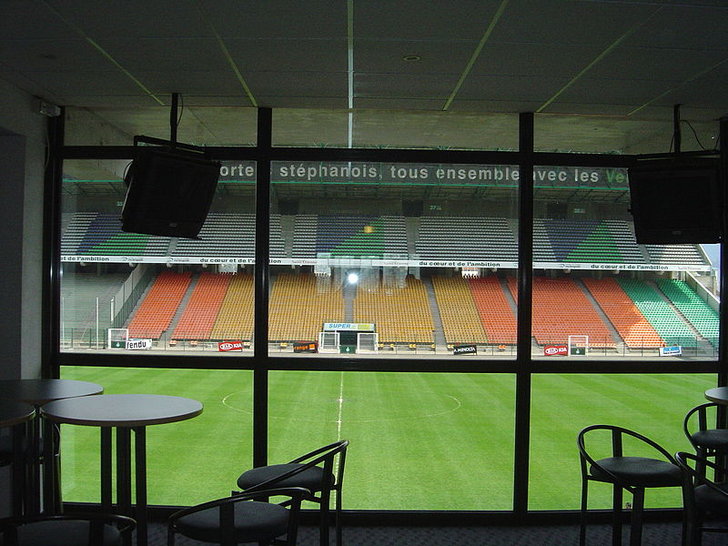
The stadium underwent numerous redevelopments ahead of its hosting job in the 2016 European Championship tournament. Part of that included the addition of new hospitality areas in the ground that will make your match day experience a special one. Owing to the overall age of the stadium the quality of the hospitality sections might not be as top-class as you’d expect at a newer ground, but the service will still be top-notch.
Private Hire
There are eight different ‘salons’ at the Stade Geoffroy-Guichard available for private hire. They can be set up in numerous different ways depending on how many guests you are hoping to have and what event it is that you’re hoping to host. If you need more information on your private hire options then it’s worth getting in touch with the club directly.
Stadium Tours & Museum
The club has an excellent museum that you should consider attending if you’re heading to the Saint-Étienne region. It was first inaugurated at the end of 2013. You’ll be able to relive the success of Les Verts at the museum, seeing numerous bits of club memorabilia as well as replicas of the trophies they have won over the years.
You can also combine your visit to the museum with a tour of the stadium if you head there on the right day. The club do regular tours on Wednesdays and Saturdays at 11am, 2.15 pm and 3.30 pm as well as at 2.15 pm and 3.30 pm on Sundays. They also put additional tours on during the school holidays. The combined ticket will cost you €15 if you’re an adult, €12 if you’re a concession or €10 if you head there on a day they’re doing a student special deal.
About AS Saint-Étienne
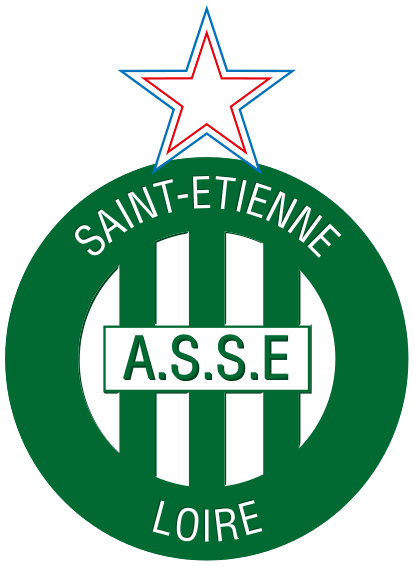
Association Sportive de Saint-Étienne Loire, to give the club its full name, is arguably the most successful club in the history of French football. They have won ten Ligue 1 titles, three Ligue 2 titles, six Coupe de France trophies, five Trophee des Champions, three Coupe Gambardellas and two Coupe Charles Drago trophies. They were also the runners up in the 1976 European Cup Final, losing out to Bayern Munich by one goal to nil.
The majority of the club’s success was achieved in the 1960s and 1970s when led by managers such as Jean Snella. Snella did so much for the club, in fact, that they named one of their stands after him. Many of France’s best players have gone through Saint-Étienne at some point, including Laurent Blanc, Jacques Santini and Michel Platini.
Saint-Étienne was originally set-up by employees of the Groupe Casino set of grocery stores that were based in the city. They were initially called Amicale des Employés de la Société des Magasins Casino, but the French Football Federation banned the use of trademarks in the title of clubs so they dropped the Casino and became simply Amical Sporting Club. They were merged with Stade Forézien Universitaire in 1927 and became Association sportive Stéphanoise. In 1933 the French game turned professional and Stéphanoise became AS Saint-Étienne.
Stade Geoffroy-Guichard History
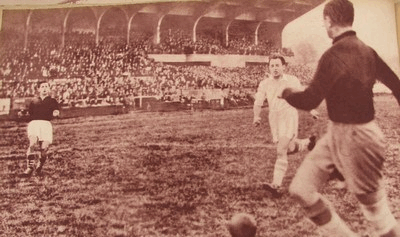
Stade Geoffroy-Guichard has been used as a featured stadium in the 1984 European Championship, the 1998 World Cup, the 2003 Confederations Cup, the 2007 Rugby World Cup and the 2016 European Championships. The ground was named after Geoffroy Guichard who was the founder and owner of the Casino retail group who bought the site on which it was built and who the team was named after originally.
There were no seats in the corners of the stadium until recent developments to the stadium added them. This was done in order to add additional seating to the ground ahead of the 2016 European Championships. Otherwise the stadium is very much built in what is considered to be the ‘English style’.
When the ground first opened it had a capacity of just 1800. This increased to 5000 in 1935, 15,000 in 1938 and 25,000 in 1957. In 1968 the capacity was improved to 39,570 and in 1984 it went to 48,274, though only 22,200 of this capacity was seated. In 1998 it was reduced to 35,616 as it was all seated. The Most recent developments have seen the capacity increase to 41,965.
Future Developments

The stadium was developed ahead of the UEFA European Championships in 2016, so it’s unlikely that there’ll be any more changes to it any time in the future.
